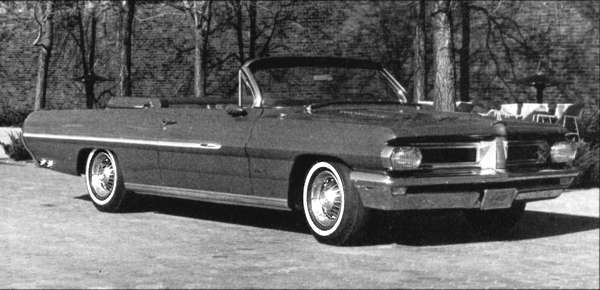A new generation, 1978-87
The General's new G-body made its debut in 1978. Riding on a new 108-inch wheelbase, the Grand Prix shared a common platform with the Chevy Monte Carlo, Buick Regal and Olds Cutlass. The new GP lost almost 750 pounds and a full 17 inches in length.
Due to the increased commonality of body parts and a much boxier look, the GP was more generic than ever. Although the '78 did have some traditional GP styling cues, they were confined to the front and rear end treatments, and almost looked like token gestures. A large radiator-style grille and quad rectangular headlights adorned the front. The roofline was a formal notchback design, while the rear had vertical taillights with slotted lenses.
As before, the new-generation GP was offered in three versions, the standard model, the sportier SJ and the luxurious LJ. While the most recognizable differences between them were trim and interior levels, the differences became less apparent under the skin.
For the first time in its 17-year production run, the GP did not come with a Pontiac V8—or any V8—as standard equipment. If you didn't check any other engine option, you received a 231 Buick V6, hooked to a 3-speed manual gearbox. Other available engines included a 301 2-barrel in the LJ and a 4-barrel version in the SJ.
While the reduced weight helped the bottom-line performance of the new GPs, they were still not the performers they had been even a few years before. Manual transmissions were not offered in California, and Chevy 305s replaced 301 Pontiacs in the Golden State and high-altitude counties.
The interior of the new Grand Prix was one area in which it could keep up the tradition of the previous generation. A new dash with a squared-off perimeter was complemented by an array of round gauges with simulated wood trim. Bench seats were available in the base Grand Prix, and a loose-pillow version of the bench seat came in the LJ. Bucket seats with see-through headrests Came on the SJ, and leather upholstery in a new "Viscount" pattern was optional in both upper-level models.
The Grand Prix SSJ moniker was revived for 1978 as a dealer-installed conversion (it was in no way connected with Hurst). The SSJ was offered only in Ohio and Indiana, and included a heavily padded landau top with silver- or gold-tone targa band moldings. It also sported smaller-than-stock opera and rear windows. SSJ badges and window decals resembling etched glass rounded out this fairly tasteless package. It is unknown just how many of these disco cruisers were ordered, but they must have been a hit with the lounge lizards in those areas.
Pontiac built 228,444 GPs for 1978. The standard version garnered the lion's share of the production run—127,253 units, to be exact—with 65,122 LJs and 36,069 SJs making up the difference.
NEXT >
While the 1962 X-400 was actually the third in a
series of show cars, it was the first to be trimmed out
as a Grand Prix. Previous editions (1959, '60 and '61)
were Catalina-wheelbased Bonnevilles. The body was
customized by GM stylists, and power came from a
Mickey Thompson-built, supercharged 421 with
four side-draft carburetors. This car was allegedly
dismantled to build the 1963-64 version.
 |
|
|